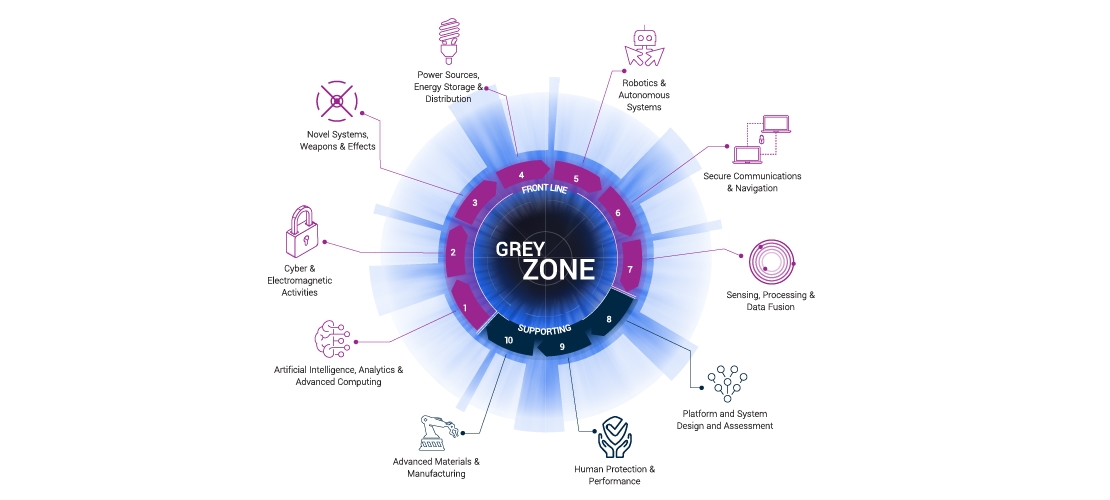This report will:
- Outline the common challenges that grey zone activity presents to both defence and security organisations, and the most common modes of grey zone activity today;
- Offer the ten most promising types of technology which offer the greatest potential for adapting existing capabilities to these new threats;
- Provide guidance on how to bring these technologies together in the right combinations for known grey zone scenarios;
- Provide recommendations on how to adopt these technologies in a safe and assured way.
Listen to our podcasts

Ep3 – Common Challenges
In this episode, we delve into a section of our report that focuses on common challenges for defence and security organisations when addressing grey zone conflict, speaking to three QinetiQ experts and one from Inzpire.

Ep4 – Technology Areas
In the fourth episode of the series, we speak to our Chief Technology Officer, Mike Sewart, talking through each technology area, how it relates to the grey zone and why it will make a difference in tackling the grey zone.
Common challenges for defence and security

Grey zone tactics don’t discriminate between defence and security targets, and neither should the West’s responses to such tactics. Western organisations must tackle, in an integrated way, the capability gaps that these tactics reveal - rather than seeing them as discrete challenges to address individually.
We explain six of the most pressing challenges of grey zone conflict that are common to defence and security organisations.
Download the list of challenges
The role of emerging technology in adapting to meet grey zone challenges
We have identified 10 technology areas that can help the West reclaim its advantage in the grey zone via technological superiority, without lowering legal and ethical standards.
They are grouped into:
- Front line technology areas (those deployed directly in grey zone competition)
- Supporting technology areas (those which indirectly assist grey zone operations; aiding the design, manufacture and assurance of front line technologies)

